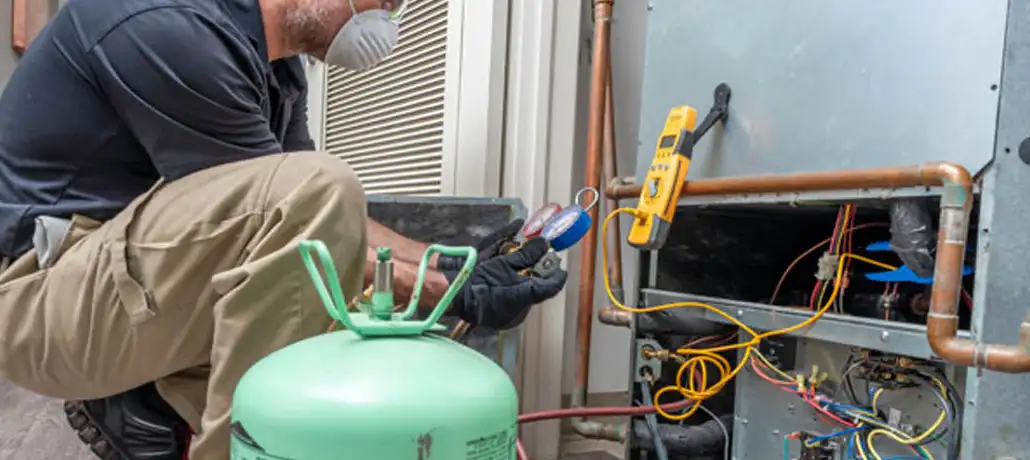

A Deep Dive into Advanced Repair Techniques and Refrigeration System Analysis

Welcome to the Refrigerator Repair Blog, your premier destination for in-depth analysis of modern refrigeration systems and advanced repair techniques. In this comprehensive guide, we’ll explore the complexities of refrigerator components, examine cutting-edge diagnostic methods, and provide expert insights to help you master the art of refrigerator repair. Let’s embark on this analytical journey!
Table of Contents:
- Dissecting Refrigeration Systems: A Thorough Analysis of Key Components
- Advanced Troubleshooting Techniques: Delving into Innovative Diagnostic Methods
- Tackling Complex Refrigerator Repairs: Expert Advice and Strategies
- Essential Tools and Resources for the Refrigerator Repair Aficionado
- FAQs: Answering Intricate Questions on the Refrigerator Repair Blog
- Conclusion: Advancing Your Refrigerator Repair Knowledge through Analytical Thinking
Dissecting Refrigeration Systems: A Thorough Analysis of Key Components
In this section of our Refrigerator Repair Blog, we will examine the inner workings of refrigerator cooling systems, focusing on the crucial components and their interconnected functions.
Analyzing Essential Refrigerator Components:
- Compressor
- Condenser
- Evaporator
- Expansion Device
- Refrigerant
- Temperature Control Devices (Thermostat or Thermistor)
- Defrost System
- Door Gaskets
- Electronic Control Board
- Sensors and Switches
The Role of Expansion Devices in Refrigeration Systems
Expansion devices, such as capillary tubes and thermal expansion valves (TXVs), play a critical role in regulating the flow of refrigerant into the evaporator. By managing refrigerant pressure and flow rate, they significantly impact the cooling capacity of the refrigerator.
Advanced Troubleshooting Techniques: Delving into Innovative Diagnostic Methods
In this section, we’ll investigate state-of-the-art diagnostic techniques that enable you to address complex refrigerator issues with confidence and precision.
Ultrasonic Leak Detection
Ultrasonic leak detection employs soundwave technology to identify refrigerant leaks within the refrigerator’s components. This non-invasive method provides a highly accurate means of pinpointing potential issues such as refrigerant leaks or failing components.
Vibration Analysis
Vibration analysis involves monitoring and measuring vibrations within the refrigerator’s components, such as the compressor and fan motors. This advanced technique can detect early signs of component wear or misalignment, allowing technicians to address problems before they escalate.
Remote Monitoring and Diagnostics
Many modern refrigerators are equipped with remote monitoring and diagnostic capabilities, accessible via Wi-Fi or smartphone apps. These features streamline the troubleshooting process by providing real-time information on system performance and potential issues, often before they become critical.
Tackling Complex Refrigerator Repairs: Expert Advice and Strategies
In this section, we’ll share expert guidance and strategies for addressing intricate refrigerator repair situations that demand advanced diagnostic and repair techniques.
Scenario 1: Fluctuating Temperature Issues
- Assess the accuracy and functionality of the thermostat or thermistor
- Evaluate the cleanliness and airflow of the evaporator and condenser coils
- Inspect the refrigerator’s sensors, including humidity and temperature sensors, for correct operation
Scenario 2: Persistent Noises or Vibrations
- Investigate the compressor and fan motors for wear or misalignment
- Examine the refrigerator’s mounting and leveling for stability
Check for potential contact between internal components, such as the evaporator and condenser coils, or foreign objects caught within the system
Scenario 3: Frequent Tripping of Circuit Breakers or Fuses
- Examine the electrical wiring and connections within the refrigerator for signs of damage, corrosion, or loose connections
- Test the refrigerator’s components, including the compressor and fan motors, for potential short circuits or ground faults
- Assess the power supply and circuit breaker to ensure they meet the appliance’s requirements and are functioning correctly
Essential Tools and Resources for the Refrigerator Repair Aficionado
In this section of our article, we’ll outline the indispensable tools and resources necessary for performing advanced refrigerator diagnostics and repairs with precision and efficiency.
Must-Have Tools for Advanced Repairs
- Digital multimeter
- Clamp meter
- Non-contact infrared thermometer or thermal imaging camera
- Ultrasonic or electronic leak detector
- Screwdriver set
- Nut driver set
- Wrenches and pliers
- Wire strippers and crimpers
- Soldering iron and solder
- Vacuum pump and refrigerant recovery equipment
- Manifold gauge set
Valuable Online Resources
- Manufacturer websites: Access technical documentation, service manuals, and wiring diagrams specific to your refrigerator model.
- Technical forums and communities: Connect with experienced technicians and DIY enthusiasts to discuss advanced repair techniques and share valuable insights.
- Video tutorials: Follow step-by-step guides and demonstrations of various repair methods, often provided by skilled technicians.
FAQs: Answering Intricate Questions on the Refrigerator Repair Blog
In this section, we’ll address some frequently asked questions related to the technical aspects of refrigerator repair and maintenance, providing analytical insights to help you better understand complex issues.
What is the analytical approach to diagnosing and resolving issues with a refrigerator’s evaporator fan motor?
Begin by evaluating the fan motor for proper operation, such as rotation and noise levels. If the motor appears to be malfunctioning, use a digital multimeter to test its electrical windings for continuity and resistance. Additionally, inspect the fan motor’s mounting and alignment to ensure proper operation. Consult the refrigerator’s service manual for specific testing procedures and guidelines.
What factors should I consider when working with variable-speed compressors in modern refrigerators?
Variable-speed compressors require specialized diagnostic techniques and tools, such as an oscilloscope or a manufacturer-specific diagnostic tool, to monitor and adjust their performance. Additionally, it is essential to be familiar with the refrigerator’s control algorithms, as they directly impact the compressor’s operation.
How can I systematically determine if a refrigerator’s electronic control board requires replacement or repair?
Use a digital multimeter to test the control board’s power supply, input and output signals, and continuity. Additionally, visually inspect the control board for signs of physical damage, such as burnt components or damaged traces. If these tests indicate an issue, consult a professional technician or the refrigerator’s service manual for further guidance.
Conclusion: Advancing Your Refrigerator Repair Knowledge through Analytical Thinking
Our Refrigerator Repair Blog aimed to provide you with analytical insights into refrigerator components, state-of-the-art diagnostic methods, and the necessary tools and resources to excel in complex repair tasks. As you continue to hone your technical skills, always prioritize safety and consult a professional technician if you’re ever uncertain about a repair or lack the required experience.
By adopting an analytical approach to refrigerator repair, you can expand your problem-solving capabilities and gain the confidence to tackle a diverse range of appliance challenges. Stay curious, keep learning, and continue to explore the fascinating world of refrigerator repair through an analytical lens! Embrace new technologies, engage with fellow repair enthusiasts, and stay up to date with the latest developments in the appliance industry.
Remember, the Refrigerator Repair Blog is your go-to source for in-depth analysis and expert advice on advanced repair techniques and refrigeration system intricacies. Whether you’re a seasoned technician or a dedicated DIYer, our goal is to empower you with the knowledge and resources needed to tackle the most complex refrigerator repair challenges.
As you progress on your journey toward mastering the art of refrigerator repair, remember to approach each problem with an analytical mindset, questioning the underlying causes and considering all possible solutions. This critical thinking will not only improve your troubleshooting abilities but also foster a deep appreciation for the engineering marvels that modern refrigerators truly are.
In conclusion, the Refrigerator Repair Blog is committed to helping you elevate your appliance repair expertise by providing comprehensive analysis, expert insights, and a wealth of resources. Keep learning, stay curious, and embrace the challenges that come with mastering the art of refrigerator repair. Together, we can continue to advance the field of appliance repair and contribute to a more sustainable and efficient future.

We will arrive on time and carry out repairs of any complexity
Santa Barbara Appliance Repair at (805) 456-6512 has been a dependable source for many families living in Santa Barbara and neighboring cities for the last decade. Many residents appreciate the work we did for them and called us again or referred us to their family members and friends. Having healthy business relationships with clients and building our client network is crucial to our business. Santa Barbara Appliance Repair serves households and businesses by fixing problems and applying experience and knowledge to the following appliance brands: Wolf, Viking, Thermador, JennAir, Miele, Fisher & Paykel, Samsung, Bosch, LG, GE, Kenmore, Whirlpool, Asko, Kenmore, DCS and many other well-known brands. If you do not find your appliance brand name, do not worry. Call us at (805) 456-6512 and our customer service representatives will dispatch the right technician to take care of the problem for you. Santa Barbara Appliance Repair services include and are not limited to repair, maintenance and new appliance installation for many households and commercial brands as well.